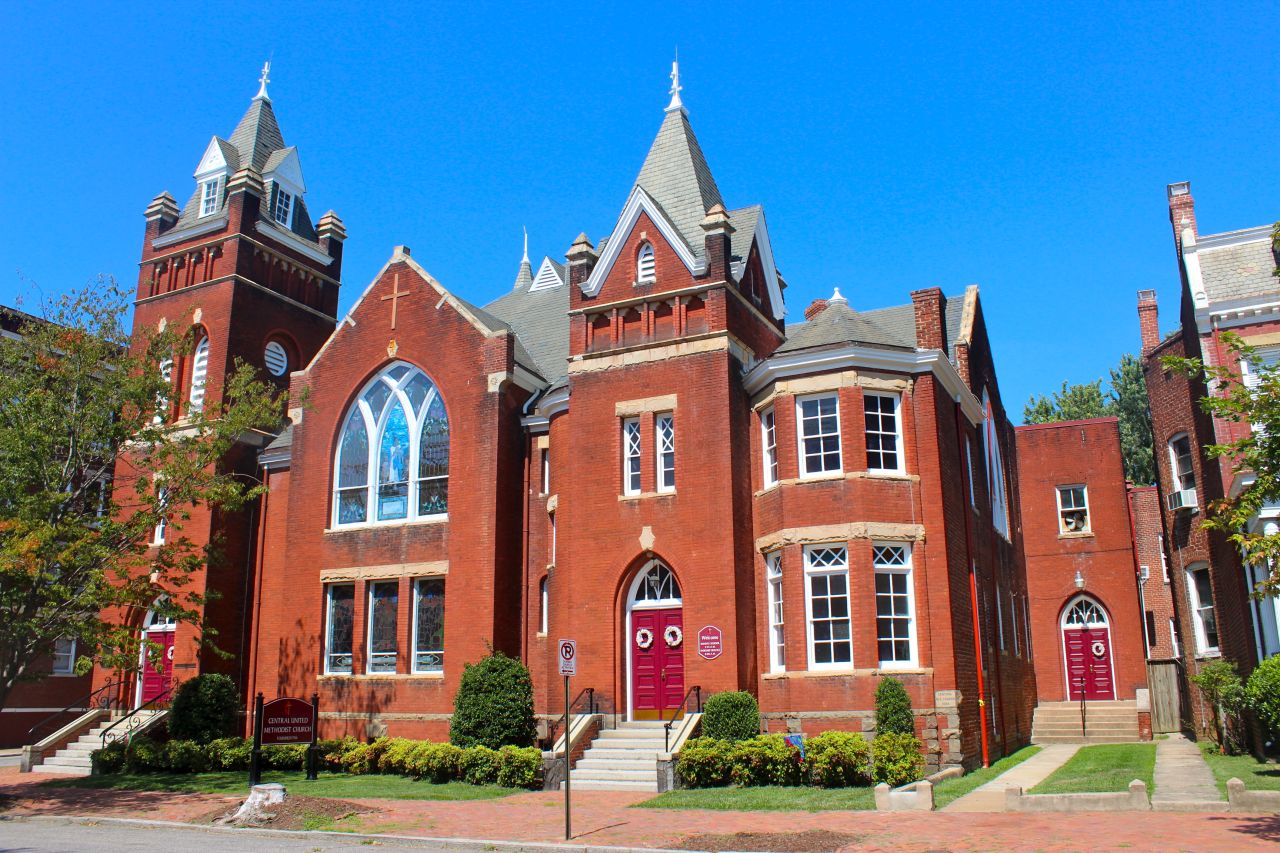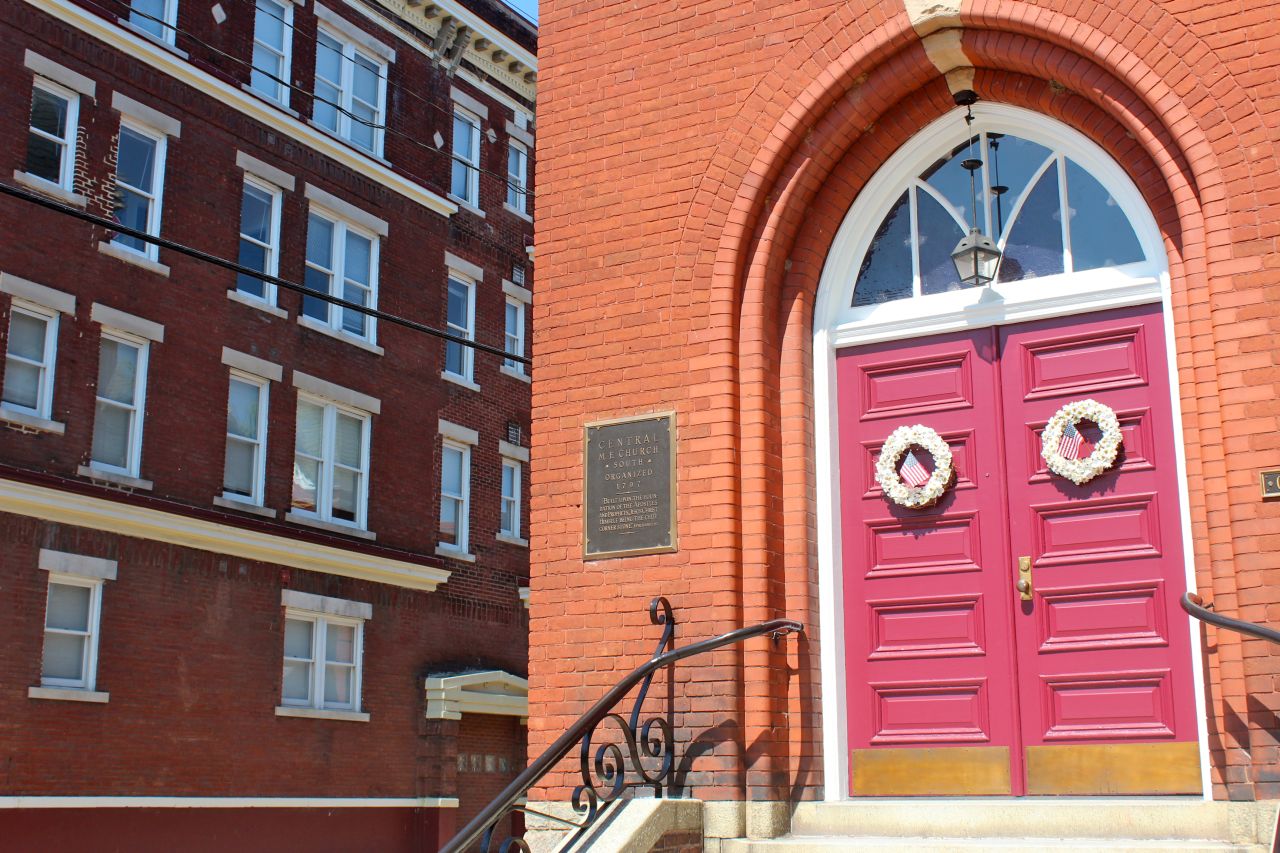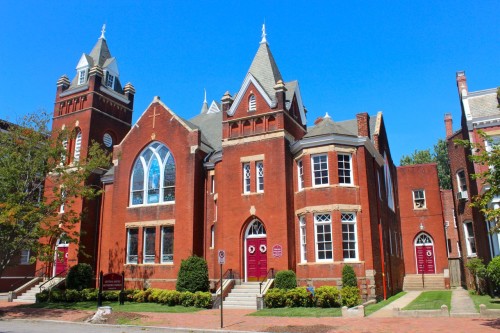Architect: Wiley Anderson
Date: 1900
Address: 1211 Porter St
Most of the architectural fabric that once made Porter Street the most fashionably attractive residential street in Manchester had fell victim to the wrecking ball by the 1970s. But one proud and important survivor is the Central United Methodist Church that anchors a corner of Porter and 13th streets. This eclectic confection of red brick, granite and sandstone—with countless towers, turrets, apses and arches, both Romanesque and Gothic– is among the glories in our city’s collection of late 19th century ecclesiastical architecture. The church, lovingly maintained by the still-active congregation today, was designed by D. Wiley Anderson (1864-1940). He was one of the most prolific and creative architects of his generation.
Tracing its origins to 1786, Central is Richmond’s oldest Methodist congregation. This is the latest in a number of permanent locations where the membership has worshiped formally since 1797 when a frame structure was built nearby at Perry and 10th streets. That structure, the Old Plank Church, is memorialized today in a stained glass window in Central’s handsome, light-filled sanctuary.
The church is French Romanesque Revival in character but distinctly Richmond with its red brick (as opposed to stone) walls. And like many European churches, it has the appearance of a building that expanded over time with evident stylistic changes. This is especially true of Central’s 13th Street façade which presents an energetic tour de force that includes three entrance towers, a turret and an array of windows that vary wildly in size and style. It speaks to Anderson’s talent that the façade holds together and doesn’t explode under its own architectural exuberance.
A similarly designed church by Anderson is the former Hanover Avenue Christian Church in the Fan (now a condominium complex).
Central United Methodist is the crowning jewel in a necklace of three 19th century brick houses in the 1200 block of Porter Street that have somehow survived in this tattered, but emerging neighborhood.
E.S.







Write a Comment